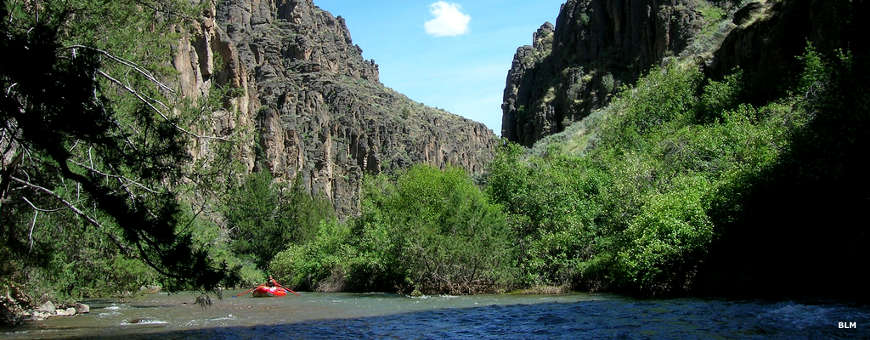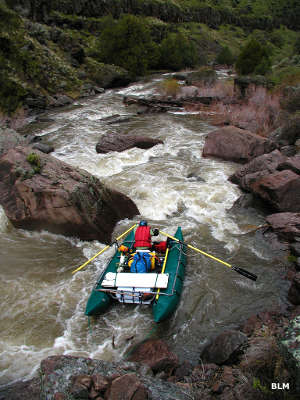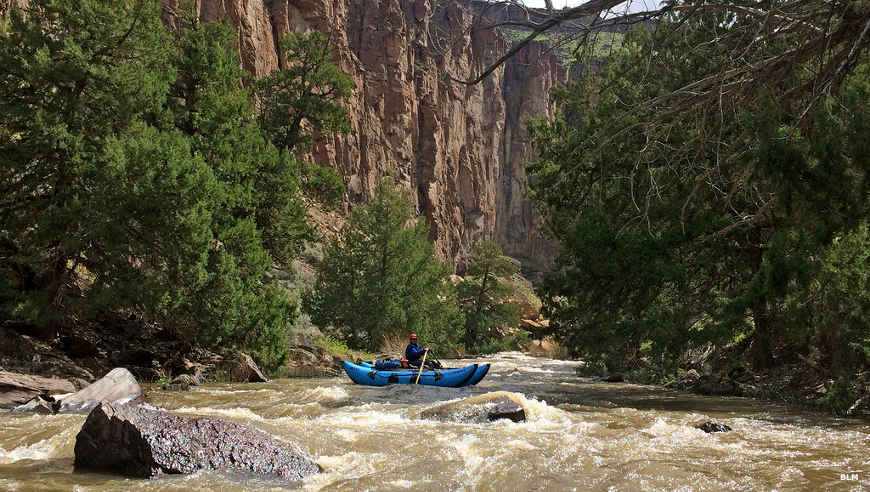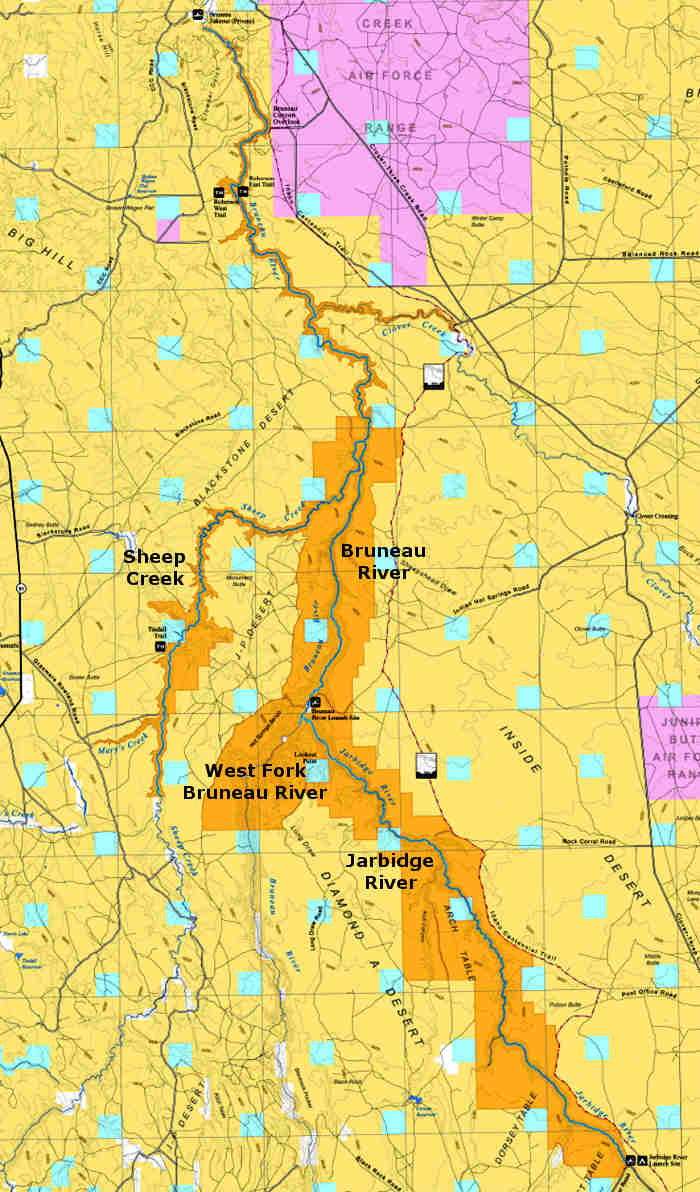Jarbidge River Wild and Scenic River

Rafting the Jarbidge River

28.8 miles of the Jarbidge River, from its confluence with the West Fork Bruneau River upstream to the Bruneau-Jarbidge Rivers Wilderness boundary, is included in the Wild & Scenic River designation. It's at the confluence with the West Fork Bruneau that the Jarbidge ends and the Bruneau River begins.
The Bruneau-Jarbidge area was the site of the massive Bruneau-Jarbidge volcanic center, whose explosions, massive rhyolite flows, basaltic eruptions set the stage for the glacial flows and subsequent streamflows that carved out the spectacular canyons. Where there's overlying basalt, the rhyolite formations are nestled in the talus slopes below the vertical walls of basalt. Weathering and erosion have carved immense monolithic cliffs and numerous sculptured pinnacles.
The Jarbidge begins as two streams coming together in the Jarbidge Mountains of northern Nevada. By the time the river crosses the boundary of the Bruneau-Jarbidge Rivers Wilderness, the stream has eroded its way deep into the basalt/rhyolite landscape and offers vertical canyon walls as much as 800 feet high on its journey to become the Bruneau.
The canyons are dominated by a mixture of high, steep lines and forms of rough, red, brown, or blackish eroded cliffs, often glazed with yellow-to-light green micro-flora. The steep talus slopes, with their yellow and light green sagebrush-bunchgrass communities, dark green juniper and medium-textured, reddish rhyolite rubble fields and rough-textured, blackish basalt rubble fields, add variety to the visuals.
There are redband trout and bull trout in the water. Redband trout are a BLM and Idaho Sensitive Species while bull trout are a federally-listed Endangered Species. Big game commonly found in the area includes California bighorn sheep, elk, mule deer and pronghorn.
Common large and mid-sized predators in the area include bobcats, cougars, coyotes, raccoons and badgers. Small mammals include bats, rodents (squirrels, mice, kangaroo rats, voles, and chipmunks), shrews, rabbits, skunks and weasels. River otters are supported by the year-long waterflow and a good fishery. Birds seen include waterfowl, shorebirds, songbirds and raptors.
Whitewater enthusiasts sing the praises of the Jarbidge as a challenging stream flowing through a deep desert canyon. Because of the high clearance 4WD requirement at the Indian Hot Springs takeout, most paddlers continue down the Bruneau to the Bruneau River takeout (private) at the north end of the wilderness. Its also recommended that no boat longer than 14 feet try to run the river: there are several long and strenuous portages along the route. There are also the problems of ever-shifting logjams and blind corners.

Rafting through more rapids
